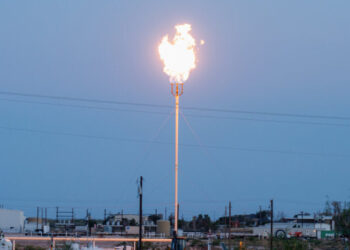One country’s trash may, in fact, be another country’s trash.
Officials in Dubrovnik, Croatia, have been unable to find any treasure in the colossal amount of garbage that washed ashore this week in the city, which is often referred to as the Pearl of the Adriatic and is typically overrun by tourists. The trash came mostly from Albania, they said.
A storm in the Adriatic Sea churned its waters, and the strong southernly currents deposited tons of trash, a city official said, on two major tourist attractions: Banje Beach and the city’s Old Town.
“Based on labels and materials found, the vast majority of the debris appears to have originated from Albania,” Marija Pajic Bacic, a spokeswoman for Dubrovnik, said on Wednesday.
Mayor Mato Frankovic of Dubrovnik said that all city services, including sanitation workers and port employees, were involved in the cleaning operation.
Cleanup crews began work in the early mornings, Denis Raos, chief of the team in the city’s historic center, told the local public broadcaster, HRT.
Ms. Bacic said that truckloads of trash removal had been scheduled for the next two to three days, and that the coastline would be quickly free of the trash — mostly plastics, but also metals and medical waste.
While members of a recycling organization said they would try to repurpose some of the plastic items into useful ones, it was unclear what could be salvaged.
The recyclers and cleanup crews have gained a lot of experience, as the Adriatic has been unloading tons of garbage onto Dubrovnik’s shores for years.
The Adriatic Sea is closed, except for a narrow entrance at the heel of Italy’s boot, so its predictable currents have made it easy to map the direction of the garbage.
“Dubrovnik has had a trash problem for decades during winter months,” a local tour guide, Ivan Vukovic, said on Wednesday.
It’s more than just trash, he said, adding that he had seen animals that had floated onto southern shores of Mljet, a nearby island.
The plastic trash is a particularly sensitive issue in Dubrovnik, a city of 42,000, which signed a pledge in 2020 committing itself to reducing plastics waste. While the city itself is small, annually it receives 4.5 million overnight stays by tourists, who generate a lot of plastics waste.
Every year, tens of millions of tons of plastic enter the Earth’s seas and oceans. Overall, less than 10 percent of global plastic waste is estimated to be recycled, with the rest disposed of in landfills, incinerated or released into the environment. These plastics have become a leading threat to marine life, according to scientists.
Mayor Frankovic said Croatia’s foreign affairs ministry had long been in talks with Albania because “we know where the garbage comes from.”
He said the ministry had offered financial assistance to Albania to help it manage the nation’s garbage.
“We see only the trash that reaches the surface, but a concerning amount sinks and remains on the sea floor,” he said.
The Albanian Embassy in Washington, D.C., did not immediately respond to a request for comment on Wednesday.
The governor of Dubrovnik-Neretva County, Blaz Pezo, told HRT that only cross-border cooperation would solve the problem.
But one solution he suggested was satellite monitoring “to try to catch this waste while it is still in the open sea.”
Adeel Hassan, a New York-based reporter for The Times, covers breaking news and other topics.
The post Dubrovnik, Known for Its Beautiful Beaches, Faces a Mound of New Trash appeared first on New York Times.




